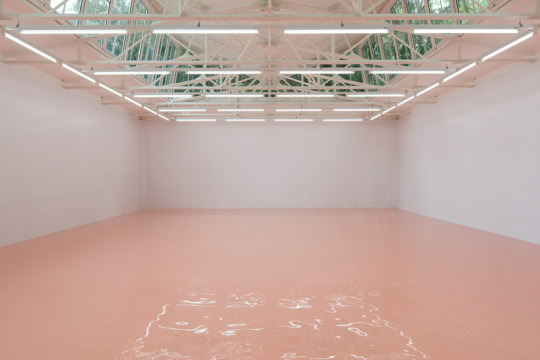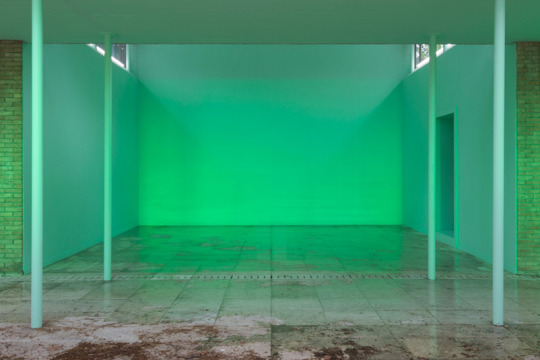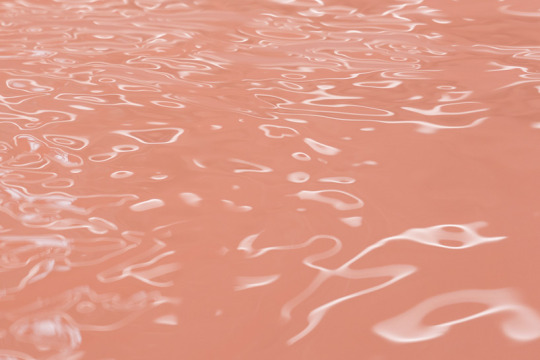Louise Bourgeois
Bourgeois was born in 1911 in Paris, France, and lived there through 1938, when she moved the United States. Her early work was mainly engravings and paintings, but she is best known for her sculptures in bronze, rubber, stone and wood. Her work often takes the form of organic objects, such as hands and the female form. She also works with cages and mirrors, reflecting what’s on the inside. She died in 2010.
“My childhood has never lost its magic, it has never lost its mystery, and it has never lost its drama.”
Thursday, May 21, 2015
Mel Chin
Mel Chin was born in Houston in 1951. He integrates ecology, botany, alchemy and many other resources into his artwork to provoke social awareness. Chin's artwork includes drawings, paintings, collages, prints, and sculptures. One of his more famous sculptures that utilizes ecology, botany, and alchemy is "Revival Field" that conjoins sculptural aesthetics and complex ideas. This piece created in 1991 is a garden built off of contaminated soil using hyperaccumulator plants that draw minerals from the soil that would otherwise be lethal to other life. These plants are harvested and burned leaving behind these expensive minerals to be resold. This process cleans the soil leading to new life.
Tuesday, May 19, 2015
David Altmejd
David Altmejd is a Canadian sculptor born in 1974. His main materials that he works with are plexiglass, mirrors and hair. Altmejd is known for his large plexiglass boxes full of a verity of materials ranging from gold chains to oversize fake ants to casts of various human body parts. He also had a collection of works made of mirror pieces. They range from interesting fragments to geometrically arranged hollow cubes. There is a very obvious difference between these two types of art. The boxes are full of colored strings and whimsical objects, while the mirrored pieces are much more sharp and serious. About the difference to theses styles, he says "for me, the grotesque is necessary to understand beauty."
The Flux and the Puddle
2014
Plexiglass and many other materials
La chambre d'hôte
2010
plexiglas, wire, thread, and paint
2010
plexiglas, wire, thread, and paint
The Swarm
2011
plexiglass, thread, wire, paint, synthetic hair, assorted minerals
Untitled
2005
plexiglas, gold chains and glue
2005
plexiglas, gold chains and glue
The Eye
2008
wood and mirror
2008
wood and mirror
Untitled 4 (Guides)
2011
wood and mirror
Untitled 4 (Guides)
2011
wood and mirror
Untitled 4 (Guides)
2011
wood and mirror
Untitled 16 (Guides)
2013
wood, mirror, thread, and paint
Untitled
2000
mirrored plexiglas, wood
2000
mirrored plexiglas, wood
The Index
2007
bronze, steel, synthetic nature, taxidermy, and plexiglass
Wave
2011
wood, plaster, burlap, and paint
2011
wood, plaster, burlap, and paint
Thursday, May 14, 2015
Cai Guo-Qiang
Cai Guo-Qiang was born in 1957 in Quanzhou City, Fujian Province, China. He initially studied stage design at the Shanghai Drama institute, but in his early twenties he began experimenting with different kinds of art. He works in a variety of mediums, fire, smoke, gunpowder, drawing, installations, video, performace... Qiang blends his knowledge of science, mastery of art and thoughtful perspective on the world to his art pieces. He uses his abilities as an artist to bring attention to and explore different cultural, political, historical and philosophical inquiries."Drawing freely from ancient mythology, military history, Taoist cosmology, extraterrestrial observations, Maoist revolutionary tactics, Buddhist philosophy, gunpowder-related technology, Chinese medicine, and methods of terrorist violence, Cai’s art is a form of social energy, constantly mutable, linking what he refers to as 'the seen and unseen worlds.' This retrospective presents the full spectrum of the artist’s protean, multimedia art in all its conceptual complexity."
“My work is sometimes like the poppy flower. It has this almost romantic side, but yet it also represents a poison”
Focus: humanity's relationship to nature, and what we struggle with and how we struggle
A reminder to appreciate our place in the world more.
(part of his Falling Back to Earth project)
CGQ: "The title of the exhibition Falling Back to Earth conjures a sense of yearning for the spirit expressed in Chinese literati paintings of earlier times, when people lived humbly and in harmony with nature, an ideal that stands in opposition to the way in which people interact with nature now."
CGQ: "Growing up, I saw how figurative paintings depicting human subjects—either political leaders or soldiers at war—were used as tools for propaganda, and have thus avoided portraying people in my work. To tell stories, I often use animals as a metaphor for human behaviour. Animals are more natural, more spontaneously expressive than humans, and they can be more easily integrated into exhibition spaces and themes."


Elegy, chapter one of Elegy: Explosion Event for the Opening of Cai Guo-Qiang: The Ninth Wave, realized on the riverfront of the Power Station of Art, 5:00 p.m., approximately 8 minutes
Photo by Zhang Feiyu, courtesy Cai Studio
Like an exhale or a "mournful sigh"
Like an exhale or a "mournful sigh"

Remembrance, chapter two of Elegy: Explosion Event for the Opening of Cai Guo-Qiang: The Ninth Wave, realized on the riverfront of the Power Station of Art, 5:00 p.m., approximately 8 minutes.

Consolation, chapter three of Elegy: Explosion Event for the Opening of Cai Guo-Qiang: The Ninth Wave, realized on the riverfront of the Power Station of Art, 5:00 p.m., approximately 8 minutes Photo by Zhang Feiyu, courtesy Cai Studio
Corcovado and Fantasia
smoke drawing
CGQ: "There are also two doctrines I embrace in Daoist philosophy: “no law is the law”, and “leveraging others’ power to exert your own strength”. In Confucianism, tolerance is a value that has taught me not to exclude others, and to learn from and work with people of different cultures; it enables me to find new possibilities in art. These underlying principles are the most valuable lessons I have learned from Eastern philosophy, and they are more important to me than superficial symbols (such as dragons), or even gunpowder as a choice of artistic medium."
Fallen Blossoms: Explosion Project, 2009 (Gunpowder fuse, metal net for gunpowder fuse, scaffolding)
The Ninth Wave - referencing the dead floating pigs in the Huangpu River last year due to extreme air pollution
Cai Guo-Qiang and volunteers rushing in to put out flames from ignition of gunpowder drawing Sentinels of the Enchanted Valley, Galpón de la Boca, Buenos Aires, 2014. Photo by Wen-You Cai, courtesy Cai Studio.
Tuesday, May 12, 2015
Pamela Rosenkranz
from tumblr:
"Pamela Rosenkranz



"Pamela Rosenkranz
Our Product, 2015
installation at the Swiss Pavilion of the 56th Venice Biennale
installation at the Swiss Pavilion of the 56th Venice Biennale
“Carneam, Evoin, Gleen, Magmelia, Neoten, Rilin, Solood, and Visorb are like Aspirin, Acrylic, Methylene, Spandex, Silicone, and Titanium, both literally and metaphorically, the stuff that Pamela Rosenkranz’s work is made of. While we are not familiar with most of these materials, their omnipresence manifestly changes the physical as well as the psychic constitution of human beings. Yet it isn’t obvious how it does so. In her work for the Swiss Pavilion, Rosenkranz reflects on the human subject being something like a fluid, a serial association generated from synthetic materials. She confronts us with the implications of an engineered nature.
Rosenkranz’s exhibition transmutes the Pavilion of Switzerland into a body of a “local skin color”, which is fluid, smells, shines, sounds and moves. Apigment that originally emerged as the specific product of migration, sun-exposure, nutrition, and any number of other contingent factors is resynthesized as a stock formula, composed of unknown ingredients.”"



Monday, May 11, 2015
Robert Adams
Robert Adams is an American Photographer who was born in Orange, NJ in 1937. His black and white photographs, mostly taken in Western America in the past 40 years or so, depict the mark that humans have made on the wilderness. Many of his photographs highlight evidence of human life against natural landscapes, often with sprawling suburban-style homes and telephone wires, half-built houses, garbage on the roadside, or even tire marks from cars that drive over the open-spaced desert. Most of his artwork questions the consequences of manifest destiny.
Wednesday, May 6, 2015
Heather Dewey Hagborg- Stranger Visions
For example,
SRY Gene: absent
Gender: Female
rs12913832: AA
Likely Eye Color: Brown
rs4648379: CT
Slightly larger nose size
rs6548238: TT
Slightly lower odds for obesity"
I think that this art is really interesting because it mixes weird, not that beautiful, uncanny sculptures with the hard science. This highlights how little privacy we have, since she just found everything she used on the street, but I think that lack of privacy might be ok.
She does this project in cities around the world to see how the populations differ. Currently one of my favorite projects, and I like that it could be ongoing forever.
Riley Cran
Riley's website
Riley makes fronts for a living, as well as logos, branding and packages. He is based in the "Pacific Northwest with a specialty in Identity, Packaging and Illustration."
Riley makes fronts for a living, as well as logos, branding and packages. He is based in the "Pacific Northwest with a specialty in Identity, Packaging and Illustration."
Marco Cochrane
I recently watched a documentary on Netflix regarding Burning Man. These pieces are by Marco Cochrane and are from a collection of three sculptures. They light up at night, and during the day the sun shines through them. I think they are incredible, especially on such a large scale. I also really liked the ideas of burning man and the mentality goers seem to have. Also it was started in SF!
Ghada Amer
- born in Cairo, Egypt and then emigrated to the United States at 11
- went to school both in Paris and Nice, France
work:
- deals with sexuality and gender
- objectification of women throughout history as objects for sexual pleasure
- uses thread and fabric as her medium
- uses pornographic images for her figures
- elements of chaos using thread
*When I started to work with thread and fabric and drew female figures, Kate unveiled Ghada to me. She was a key inspiration to my work then and now. She embraces explicit content and creates work that beautifies women while also providing a visual history to women's sexual objectification.
- went to school both in Paris and Nice, France
work:
- deals with sexuality and gender
- objectification of women throughout history as objects for sexual pleasure
- uses thread and fabric as her medium
- uses pornographic images for her figures
- elements of chaos using thread
*When I started to work with thread and fabric and drew female figures, Kate unveiled Ghada to me. She was a key inspiration to my work then and now. She embraces explicit content and creates work that beautifies women while also providing a visual history to women's sexual objectification.
Subscribe to:
Comments (Atom)




































